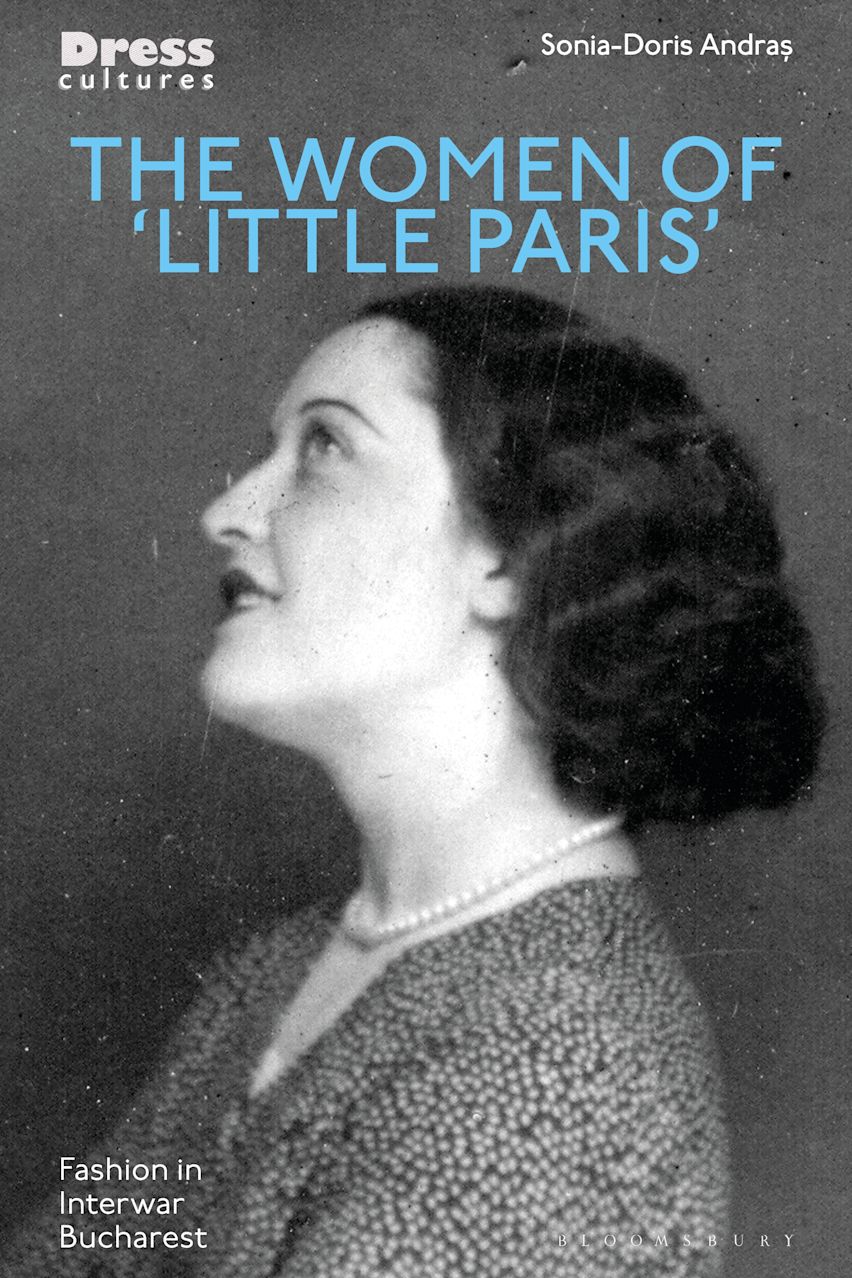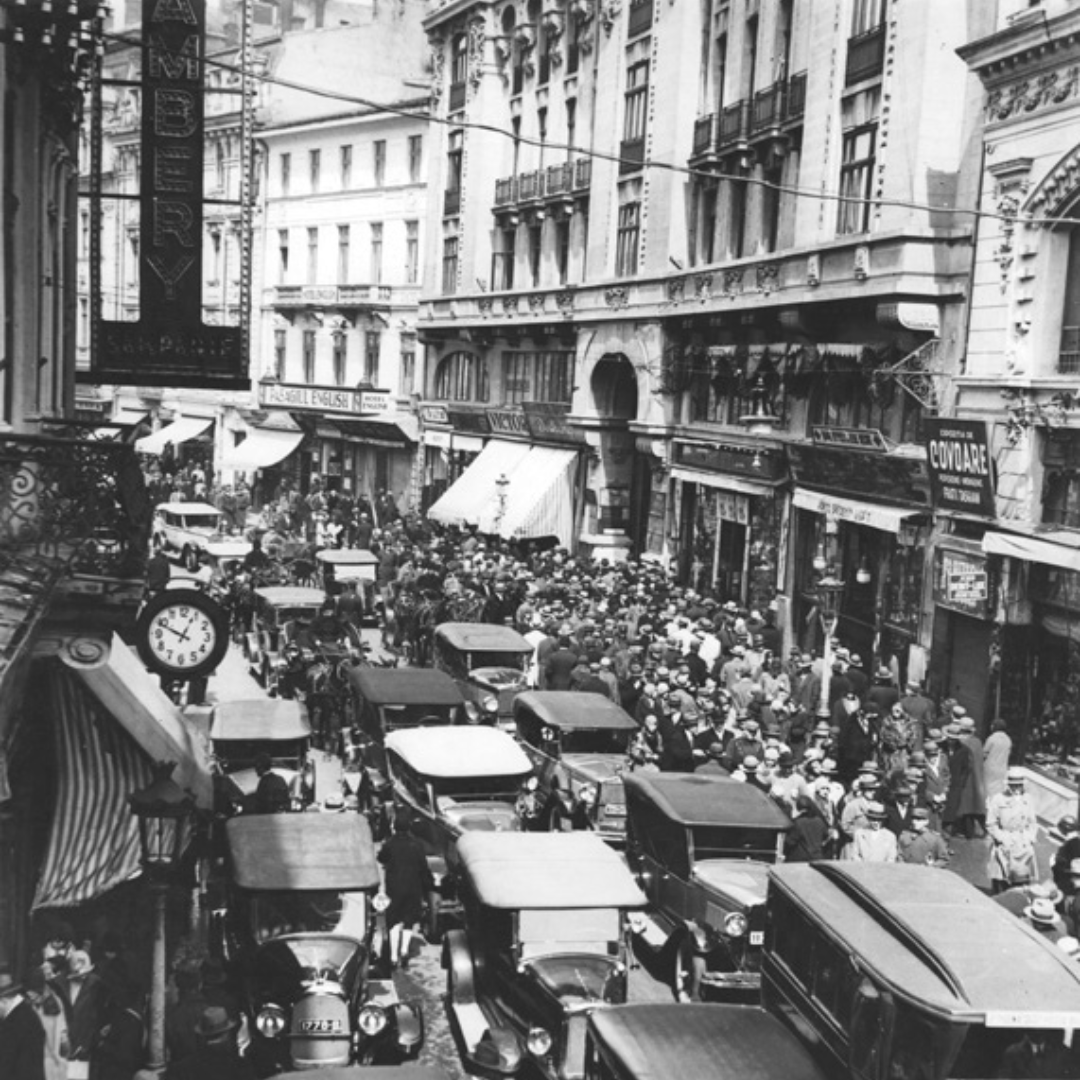The fashionable women of interwar Bucharest

Published by: Bloomsbury

At first sight, fashion may seem a frivolous topic. However, in the last two decades or so, fashion studies have increasingly become a reputed branch of cultural studies. The series “Dress Cultures”, which already counts some two dozen books with the prestigious publisher Bloomsbury, is only one example of many testifying to this fact. So is the existence of the London College of Fashion at the University of London. It is here that Sonia-Doris Andraș prepared and defended a PhD in the field. The book The Women of “Little Paris”: Fashion in Interwar Bucharest, published in 2024 with Bloomsbury is the final result. This research in cultural studies also intersects with feminist studies, social studies, the philosophy of culture and a few other connected fields.
The book’s title is both clear and complex, as it announces that the research covers several interrelated fields. In the interwar era, Bucharest was a complex, heterogeneous, liminal metropolis, located at the crossroads between East and West. In the latter half of the nineteenth century foreign travelers dubbed it “the Little Paris”, due to its downtown architecture and to the lifestyles of its aristocracy and upper middle class. Consequently, the Little Paris label did not apply to the whole of Bucharest, but only to a limited number of streets, most of them in the central zone. It is also a fact that at the conclusion of World War I, Bucharest had become the capital of “Greater Romania”, the country comprising the newly unified regions and aiming to reinvent itself as definitely modern.
Since women had always been “active agents of modernization” (p. 15), interwar Romania encouraged the emancipation of women in order to be perceived as a modern nation, different from the past. Thus, “the elegant flâneuses promenading in Bucharest’s Little Paris spaces” (p. 1), especially on Calea Victoriei, the city’s main axis, were perceived as emblematic icons of modern Bucharest and, by extension, of modern Romania. Nevertheless, as Sonia-Doris Andraș contends, the emancipation of women was incomplete at the time, as the identities of many of them were flexible, pendulating between the glamor they radiated outside and the traditional role of wives and mothers they were expected to fulfill, and in most cases did fulfill, at home. Besides, not a few male voices at the time considered that emancipation would deprive women of their proverbial “feminine charm” and, especially, that birth rates in Romania would decrease.
Andraș starts from the now widely accepted idea that the study of fashion should go beyond the description of clothes and trends, as behind fashion there is always ideology, there are policies devised to promote it and mentalities trying to hinder its adoption. Therefore, in this book the word fashion refers not only to dress and dress codes, not only to gait and demeanor, but also to ideas and creations in many fields and of all kinds. The author examines at length the Romanian economy (industry and trade, production and imports of textiles and accessories), education (Romanian women in universities), and the labor force (the employment of women and social reactions to this phenomenon). She also includes in her analysis politics (the rise of the extreme right during the 1940s), the accounts of foreign personalities (Olivia Manning and Paul Morand are only two examples in this respect), public and personal archives (her great-grandmother and great-great-grandmother are “characters” in the story she tells about fashion in interwar Bucharest), fashion chronicles in magazines (e.g. Realitatea ilustrată), images and narratives of fashion shows and fashion icons, and beauty standards in “Miss Romania” competitions and in conservative publications. Andraș also discusses the wording and images of advertisements for perfumes and perfume shops, lingerie shops, drugstores, haute couture labels and cosmetics, as well as massage, medical and comfort aids, hairstyles and hairstylists, social and personal hygiene, guidebooks, annals, telephone books, as well as birth control items and social reactions against them… to mention only the most obvious fields and products about which the reader finds ample information in this study, which is illustrated with 85 photographs.
the Hollywood ideal of beauty had almost replaced the Parisian one in Romania’s capital city during the interwar era.
A consistent theme of the book deals with women authors of, and characters in, Romanian literature, the arts and cinema, as well as with Romanian and Romanian-born models, socialites and columnists. The reader also learns about several Romanian or Romanian-born artists, both male and female, in the French avant-garde. Opinions are equally cited for and against nudity and nudism, as well as about Romanian women photographed in Vogue. An interesting remark concerns the fact that many interwar stage costumes can be seen as a link between fashion and the fine arts. Some of the costumes worn by Lizica Codreanu (a Romanian-born dancer and therapist well known in interwar Paris), which were designed by Brancusi, supply the most outstanding example in this respect. In other cases, the researcher justifiably considers that fashion mediates from high to popular art.
Characters are also analyzed from novels by well-known feminine and feminist authors like Hortensia Papadat-Bengescu, Henriette Yvonne Stahl and the now forgotten Erastia Peretz (a former Miss Romania turned writer), as well as by the still-famous male author Cezar Petrescu. Memoirs and diaries are not neglected either; the diary of Alice Voinescu, who was much respected and had a doctorate in philosophy from the Sorbonne, is an interesting example in this respect. Another section of the book deals with portraits of women; some are romantic, others represent the vamp archetype, still others feature women in everyday clothes. In any case, most portraits suggest their sitters boasted a kind of “Western” identity. Furthermore, as Sonia-Doris Andraș rightly underlines, as American movies were projected in the cinemas of Bucharest and other Romanian cities relatively soon after their première in the United States, the Hollywood ideal of beauty had almost replaced the Parisian one in Romania’s capital city during the interwar era. She therefore also describes in the book fashion and haute couture as portrayed in cinema. But it is also important to note that all the examples illustrating the various aspects of feminine fashion in Bucharest are analyzed against a European (mostly Parisian) background; Coco Chanel, Madeleine Vionnet, Jeanne Pasquin, Elsa Schiaparelli and Sonia Delaunay are only some of the personalities of worldwide and enduring fame to which this research refers.
This book is a kaleidoscope of information, opinions, demonstrations and remarks. So was interwar Bucharest. So was Greater Romania and so were many other European cities. As phrased in one of the book’s conclusions, “fashionable women in ‘Little Paris’ [were] engaging in the same activities as their contemporaries in the region and the West”, while the author also contends that “interwar Romania can be seen, known and understood through its fashionable women” (pp. 194-195).
In summary, The Women of Little Paris is a valuable and fascinating book and the information presented within its pages is rich and detailed. Sonia-Doris Andraș makes an enticing and original analyses, often from unexpected perspectives. Her study pulls together a huge and wide-ranging volume of research material to draw pertinent and insightful conclusions.
Mariana Neţ is a Professor and Senior Researcher Emerita at the “Iorgu Iordan – Alexandru Rosetti” Institute of Linguistics of the Romanian Academy, in Bucharest, Romania. For the last four decades she has been a guest lecturer at many universities in Europe and the US. She was guest professor at the University of Perpignan (1993) and at the Early-Fall School of Semiotics (1997, 2002). She has published over 150 scholarly essays in Romanian and international journals and anthologies. She has also edited or co-edited 4 issues of international journals (S, Signa) and anthologies.
